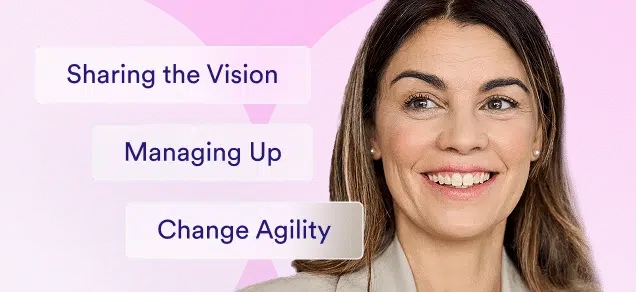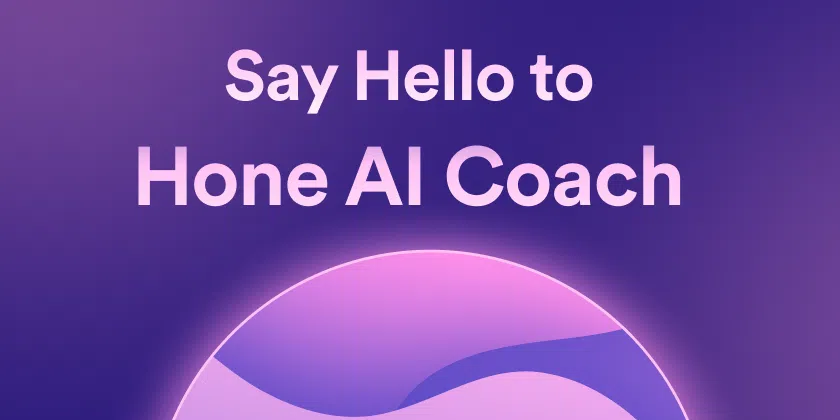Tom Griffiths: This is Learning Works, a podcast presented by Hone. It's a series of in depth conversations with L& D experts, HR leaders, and executives on how they've built game changing learning and development strategies, unleashed business growth through talent development, and scaled their global L& D teams. Tune in for the wisdom and actionable insights, the best in the industry.
I'm Tom Griffiths, CEO of Hone. Welcome to Learning Works.
We're back with Rob Lauber this week to discuss the changes that AI is likely to bring about in L& D. In part one, Rob shared his experiences as a CLO and how to overcome some of the hard problems learning leaders are facing today. Make sure to listen to that episode for even more with Rob. In this episode, we're going to dive deep on AI and its impact to L& D.
There's been incredible progress over the past year, very visibly with things like chat GPT, open AI, and other frameworks where every part of business is likely to be disrupted, uh, including L& D. So Rob, really excited to to, to go deep on this topic. Yeah, great to be back, Tom. Thanks. Absolutely. So AI has been a term in the lexicon since probably the 1960s, and every now and again, it flares up as something that captures people's imagination and kind of wanes as perhaps it You know, disappoints a little, a lot of people are saying that maybe this time it's different.
And it really certainly has been quite eye catching to see some of the things that are now possible. I'm curious for your own experiences. What about this wave of recent AI developments really caught your eye and maybe made you think it's different?
Rob Lauber: Yeah, no, it's great. I think that's right. It's, um, it's kind of like digital transformation.
I think it's better. So, um, at least I can remember one in the late eighties, but, uh, when, when desktops were, you know, uh, landing on people's desks for the first time, but I think, I think about AI as sort of, uh, where we are with AI right now feels like actually that same kind of moment. That's actually, I'll use that example, and I've talked to a few people about that as well, who can remember back when those things, um, landed on people's desks and the newspaper were like, you know, it's the end of the office worker and, you know, uh, yet somehow we're still around.
And so, um, so I, I do think it's a little bit like the generative AI piece, I think is introduced a whole new sort of wow factor to AI, right? I think. The conversation of AI has been around for like, you know, of current around three or four years, I would say, where people are like, Oh, we're using artificial intelligence and our data engine or whatever it might be.
And people were like, okay, sounds interesting, but it feels abstract and like magic thing behind a curtain. I think the, the generative AI pieces really sort of brought it out on stage and, you know, I can go into whatever. Bing or whatever and Bard and I can like start asking questions and getting answers from something that, you know, I don't even know what I'm talking to.
Right. So, um, It's interesting. I find it more like personally, I find it more. Um, a little bit more hype than reality right now, because I think about, you know, Amazon's Alexa has been around for five or six years and that's a voice based kind of piece. And if you think about the prompts that you're asking that it's not all that much different than what you're doing with generative AI, chat GPT experience.
Um, it's just text. So I, um, so I. I sometimes wonder about is it more hype than reality, but I also think the potential is really there around what's different is the whole large language model piece that feels very different and very, um, probably threatening to some and spooky to others and, uh, obviously disruptive to most of us.
Tom Griffiths: Yeah. Yeah. I think you hit the nail on the head. I think it is the generative side of what we've seen in this recent wave that really puts it on stage. I can remember the moment I thought this is really going to have an impact on our lives is when I was using chat GPT or an early version of it to write bedtime stories in the style of Dr.
Seuss for my daughter, where you could get a couple of. Prompts from her as a three year old and, uh, pump it into the prompt and, uh, you know, give her a different bedtime story every night, which is really, really cool. And obviously, you know, part of a lifestyle. So yeah, it really does seem like there's something new here on the generative side.
How do you foresee that then impacting L& D or the job of a learning leader? Yeah, I think
Rob Lauber: it's, um, I think it's like everything else. It's like, so what, what does it mean? And there's, um. I always thought about like the evolution of technology options as sort of cards in a playing deck, I guess is the way I always thought about it.
So, you know, I mean, when I started, it was all paper and classrooms, right? And, um, you know, and then it moved to some version of online. I think in 1991, I did my first online training course. And, um, and, You know, so, so then it became like, okay, now I have three, three ways I can do it. Right. Then the internet came and, uh, early days of Webex, believe it or not, you know, although it took till 2020 to actually get mainstream.
Right. Uh, some of us are using that stuff in the late nineties, early 2000s. Right, and it was again, sort of now, like, a 4th way I can deliver things. Right, and so I think of chat GPT in that sort of context of VR, AR, okay, 5th, 6th way I can do things. Um, I think about generative AI as. Sort of in that vein, but it might help me do a lot of those things more quickly, maybe than I could before.
So, you know, it's early days, but I'm seeing examples of, uh, you know, content generation, quiz generation, um, course generation through chat dbt, like, or, you know, and similar engines, um, Where it's taking now 45 minutes where it might've taken four or five days. Yeah. Right. And so I think that, uh, those are really sort of breakthrough efficiency plays right now, more than they are like substitution plays, which I actually think is good for the L and D community.
Because I think that, um, in general, that I've always, in most of my career, we've always had more requests than I could possibly handle. Yeah. Yeah. And so, 45 minutes, instead of four days. Uh, or at least some fraction of what it used to take, um, you know, that means in theory, I can produce
Tom Griffiths: more. Yeah, exactly.
And I, I totally agree. And I think that's what people sometimes get a little wrong about the fears around job replacement. Two things. One. It's not the full finished article. You need some human to drive these tools and then do quality control or curate or edit or, uh, you know, reprompt to generate the finished article.
And then two, it's not like suddenly we're going to just do some fraction of what we did before and then go home or cut jobs. It's like, if we've got. The capacity now to do five times as much as we did before, whether that's writing computer code or generating learning experiences, then it's likely that we'll take that because we're in a competitive environment and we want to do more rather than less.
So I'm curious on your take on the, the fear around, is this going to replace people in L& D? Or, um, is it? Reshape the role and what does that look like?
Rob Lauber: Yeah. I mean, you know, maybe it's different this time, but history shows that's not the case. Right. Right. You know, I mean, from gosh, you can go back to ATMs as being the ultimate teller killer in 1980 and in 2011, there were more tellers than there were in 1980.
Right. So, you know, so you can use that, you can use the desktop. Uh, example, I gave earlier, um, you know, the Internet, uh, you know, it's going to kill retail. Um, you know, yes, it's, um, in, in a lot, not the case. And so I think that, um, I think that this will probably follow a similar pattern. I think the piece, you know, and I've heard it and it's definitely not my idea, but I've heard the AI plus H.
I. right is really the winning formula going forward, which is the artificial intelligence plus the human interaction components are really the winning formula going forward. And I think you're right. Right. I can get chat GPT to generate this content in 45 minutes, but I still need six hours to sort of clean it up and get it ready.
So I think that that's more the case of what, what we should expect. Um, at least early days, I find it hard to believe it's actually going to completely replace wholesale. Uh, experiences. I can't even, I can't think of one. I mean, I've seen examples of like call centers and those kind of things. And it's like, even that, I mean, you know, today it's like chat bot or human.
I'll take the human place because the articulation, uh, and the, um, the ability to solve your problem seems to be better with human interaction. Yeah, yeah.
Tom Griffiths: No, I agree. And like you say, if we look at history, these developments in technology, just increase productivity as opposed to, um, you know, have a net negative effect.
So I think, yeah, some of the fears are overblown, but I can see, you know, almost a elevation, certainly of the production rate of L& D teams, maybe of the quality. If you're able now to just generate a video, whereas before you had to, you know. Book a camera crew and, um, write a script and now it can just be generated.
I think that's, that's really exciting. Do you see particular modalities being most likely or first to be disrupted here? Um, what, what have you seen in terms of, yeah, the different. Modalities and how AI is playing into them.
Rob Lauber: Yeah, I think, uh, that's a really good question. I think e learning content will be probably the most visible upfront.
Disruptive piece, right? It's probably actually already happening. Um, I think there's a second one, which is sort of an indirect piece of L& D would be coaching. So already starting to see, um, you know, sort of chat GPT enabled or, you know, generative AI enabled coaches, um, which is an interesting thing because there's been a big push probably in the last seven or eight years to sort of democratize access to a coach, right?
You know, it used to be sort of just for the executive team because it was too expensive and not enough coaches out there. Um, and that could be a game changer on that front. So I, I look at it as, um, you know, you know, going back to what I said in the last conversation about, you know, being an enabler, um, as a learning function, I think it can really unlock a lot of potential to, um, to be an even greater enabler in the organization to help people learn.
Yeah, yeah,
Tom Griffiths: agreed on the theme of enabling, do you see it democratizing the production of learning content? So going beyond the learning function, maybe I'm a sales leader or an engineering manager, and I want to somehow create a learning experience. How could AI help there? Do you think?
Rob Lauber: Well, I think it could play two ways.
I think one is sort of to your example where I want to create some learning experience for my people. So. Give me content. That's going to let me do that. Right. I'm going to run a meeting and I want to take them through a, uh, I don't know, team building experience. Give me three team building ideas. Right.
Yep. That could be super handy, super creative way to do it. I think the other side of it might be more, um, along the lines of personalization. And that is, you know, I'm that person, I'm a sales leader and, um, I have a specific piece of, uh, a product that I need to learn more about. Can you give me a walkthrough of that concept?
Yeah. Right. So talk, you know, tell me everything about that product. Like I'm a novice and, you know, and suddenly I'm getting a sort of a personalized, the ultimate personalized learning experience served up to me. You know, and the prompt back might be, would you like that in a video? Would you like that in an online course?
Would you, would you like to see 15 videos that exist in our, you know, our organization's language model that are accessible to you?
Tom Griffiths: Yeah, yeah, that's fascinating because then, you know, the learning organization's role or part of it would become making sure that the model has been trained with all the necessary knowledge, but not necessarily to go then and create the learning artifacts for the end user because they're interrogating it themselves or generating something unique to them.
Um, that's really interesting. I
Rob Lauber: think that's right. I think that the training piece is really important. So, and then I think the, the other pieces, if you think about your organization, um, and you say, you know, like I need a framework for having a coaching conversation, right? Uh, we all know today there's, there's hundreds of them out there, right?
If you, you know, traditionally Google them, you'll find lots of them, right? And organizations tend to have one of their own. Or a preferred model, perhaps. So how do you make sure that that inquiry. Uh, gives you a predictive answer every time to people in your organization that's consistent with culturally the way you want to operate your business.
Yeah, I think that's that's an example of like. A learning leader or a learning organization should be thinking in that construct about how it might be. Yeah.
Tom Griffiths: Yeah. So, really the curators of the right kind of training and models and frameworks and content that then. Get loaded in and learned and then deployed in different ways to the end user.
Um, I was thinking, as you were saying, the coaching example, you could ask, okay, so what's the coaching framework that I should use here? And that comes from the company, but then you could ask about, okay, well, give me an example in my department, like for an engineer who's underperforming, how can I use a coaching conversation so they could develop.
Beyond the basics into something that's specific for them using the seeds that the L& D team have planted, I suppose, in, in terms of the frameworks.
Rob Lauber: Yeah, I think that's right. And I think that, um, you know, what'll be interesting to see is if you're a content provider, right? This can be a big threat or a big opportunity for you.
So, right. I remember, I remember when, um, I don't know, something came out on generative AI, some big announcement came out, maybe it was, uh. Um, uh, GPT 4 came out from GPT 3 5, uh, like Chegg, big content provider. Their stock price was 51 percent in one day. Right. People were like, Oh my God, it's the end. And actually, actually, I think though that, um, you know, those.
IP driven, like Chegg basically has a large language model. Right? So how, if you're in an organization, how do you buy Chegg's content and use that as part of your large language model relative to the subject matter that they offer to you? How do you make sure that's your large language model? I think it's a really interesting sort of opportunity on the supplier side as well, where instead of selling courseware now, you might be selling sort of IP libraries in a different, in a different construct.
Tom Griffiths: Yeah. Yeah. That is interesting to think about what it means for content libraries and vendors. For the learning practitioners, I don't want to dismiss the fears that they might have around. There's a change coming due to AI, whereas perhaps the fears over complete replacement may be overblown. I think we can say with near certainty that the job itself is going to change quite substantially.
And so how would you recommend someone in the learning field today gets up to speed and starts to develop their skills and understanding of what's here now and what might be Becoming so that they can keep pace with the change that's coming.
Rob Lauber: Yeah, it's tricky. I think there's a lot of resources out there right now.
Like I follow somebody named Ethan Malik, who's, uh, you know, basically a professor and a resource, uh, uh, researcher around all things AI. Um, and he, you know, does like a weekly sub stack and shows up in my inbox and very interesting sort of stuff. Last week you talked about like, it's all about the prompts.
It's not about the, you know, it's not about the technology. It's all in how you ask the question. Right. And those kind of, you know, sort of good common sense, sort of translation of everything that's going on. I also think that there's been no shortage of, um. You know, AI and L and D, what does it mean kind of webinars and conversations that are out there?
And I would say, scan for those. You can find a lot of them on LinkedIn. You can find them in a lot of different places. And I would, I would try to pay attention to those. And then I think the other place I would go is I'd go over to my resources. And I sit there and say, what are you guys thinking about all of this generative stuff?
Because there's a whole, my guess would be that they are thinking about your problem from a completely different perspective. Um, and might make really good partners for you on the journey, uh, around sort of enabling generative sort of activity in the organization. Yeah, yeah,
Tom Griffiths: I agree with that. Uh, I think.
Having that alternative perspective from a technical side where they can perhaps bring a better, deeper technical understanding of what's possible and what might be possible to then jam around how that could apply to your field, whether it's L& D or anything else, I think is right. Uh, one example that happened with us at Hone is we were all eager to kind of go jump on OpenAI, chat GPT, start pumping it full of prompts and seeing what we get back and, uh, ICTO rightly said, well, let's be careful here because.
Uh, there's a data ownership piece, right? If you put proprietary stuff in there, then it goes into the learning model and can be used and pulled out elsewhere in some ways. And so there's also, you know, cautions or guardrails that companies need to put around exactly how they're engaging with these tools or which ones they are.
Um.
Rob Lauber: Yeah, so I won't go in and, uh, you know, uh, prompt the, uh, you know, the business strategy for Hone, is that what you're saying?
Tom Griffiths: Yeah, exactly. Hopefully someone hasn't done that already, but yes, that's right.
Rob Lauber: That's right. Someone was actually, someone actually was bragging to me about how they used it to sort of define out their strategy session and help build out their five years.
You know, strategic plan. And my answer was, that sounds fantastic. You know, like now all that's out there for everybody and their face went a little white and I was like, early days is like April and I was like, it's open source. Now everybody can see that. That's
Tom Griffiths: funny. Maybe I'll go and try my competitors and see if I can get their strategies.
I mean, speaking of strategy, we've talked a bit, a lot about the frontline impact of AI, uh, for the folks creating learning content, instructional design, learning artifacts, curious if you have any thoughts on how it might help the more senior ranks of the L and D profession. Have more of a voice at the executive level, uh, whether AI is a theme or, uh, some kind of angle there, uh, referencing our previous conversation about, you know, L and D being more, uh, strategic and in line with the business.
Rob Lauber: Yeah, I think, uh, I think you have to walk in with sort of matching ideas of what's possible from your perspective with where the organization's trying to go. And, or, um, you know, or, um, what the organization might be ready for. So, you know, like I think interesting conversations are always like, let me walk in and show you how I can completely disrupt myself with two simple ideas.
Right, and, uh, here's what, you know, here's 2 simple things that chat GPT might enable us to do that we're going to pursue, um, that could save us, uh, you know, whatever, a million dollars a year on our LMS system or whatever it might be. Right? No offense, Tom. But, um, the, you know, those kind of things, I think are, um, you know, those kind of things are the, Things you should bring into those conversations that get people's attention and demonstrate that you're thinking about the practical application of AI to your craft.
In the context of the business that you're working on. And I always think that that's that, you know, and, you know, you can insert it with anything, but I think that always gets you and helps you keep your seat at the table. Yeah.
Tom Griffiths: Yeah, exactly. If the conversation is moving in that direction broadly, then.
Keeping pace or being ahead of what that means for your function kind of keeps you there as opposed to necessarily gets you there. And if you can get a little further ahead, then, you know, you can, it can get you there potentially.
Rob Lauber: Yeah, I think, you know, we talked about in our first conversation about sort of anticipating and thinking about where your company's.
Trying to go, I think this is this is a classic example back to that, where you should be thinking about where I can take you as a learning function and experiment with it. Frankly, like you mentioned and. You know, and, and bring your ideas in before somebody asks you,
right. So, or when somebody then asks you, you've already deeply thought about it. You can give two or three examples of what you're thinking about and people walk away with confidence that, okay, you know, Tom's got a handle on what's going on and is thinking about how this might impact our business.
Tom Griffiths: Yeah, exactly.
And staying within the guidelines, but a proof of concept where you've tried something out on just one piece of content to show that it can work and be so powerful beyond just the, the theory or the, uh, trying to boil the ocean with all the things we could do is like, Hey, we identified. A dozen different things we could do, but we tried these two and this one looks like it really could help us.
I, I find that quite powerful as our team is exploring how we can use it. Just those, those proof of concepts.
Rob Lauber: Yeah, it could be even like, uh, walking in and saying like, here's three simple prompts. We think could be game changer. Yeah. Yeah,
Tom Griffiths: exactly.
Rob Lauber: It can be for somebody in our organization, just use these prompts to learn these things.
Tom Griffiths: Exactly. Yeah. It can be that, that simple and that transferable. That's a good point. So, you know, we both have exposure to the startup world and everybody these days has got AI on the box, uh, because it helps with valuations and marketing and some of it's real. Um, and some of it may be a little bit contrived and hyped up.
So how would you advise learning leaders or learning buyers to really understand? which vendors are actually leveraging AI to the degree that it's helpful and those that aren't.
Rob Lauber: Yeah. I think, um, I think proof points become really important. So, uh, and then, and I would say, um, you know, so like demonstrate it to me.
I'll give you, I'll give you a construct. You show me how that might work. Um, if I'm talking to a supplier would be one. And then two, um, if, if I sort of, if that screen was passed and I was more curious, I'd say, great, let me run a small pilot with like 10 people, leveraging your construct, maybe even with my team.
And, um, you know, let me get some reaction here about, you know, how game changing this really is against the status quo. Right. And I think that's what people are looking for, right? You know, because the expectation of generative AI is that, oh, it's going to change the game for everything. Right. And, you know, I think that's what's driving the supplier community, which frankly, will probably be.
Right. Lead what's really game changing and what's not and I think that's what's going to lead the L and D community around what's game changing and what's really not, you know, some blend of those 2 is really going to make the difference. I think that's 1 and then I think as a. As a learning leader, I'd ask for examples of where that's already happening because I don't know.
I was never a fan of being the 1st. Yeah. So, um, you know, I, I'd like to iterate off of other people's ideas is my, you know, my own personal nature. But I think that I would look for, like, so show me how you've actually done that in a real world setting. Yeah,
Tom Griffiths: yeah, yeah. So a robust vendor evaluation with examples, potentially, uh, you know, case studies and then a pilot to, to check, uh, that, you know, they can do what they say.
And I didn't mean to suggest like having AI as an end into itself. Sometimes that for me gets a little frustrating about a hype cycle. It's just, people just want to have. The, the buzz of having something AI, really, it's got to be in service of some outcome. Uh, as you started this segment around, it's like, it's another tool in the toolbox alongside everything else to help us get to an outcome.
So if it's in service of that, great, if it's for the sake of it, then, uh, probably best not to get distracted.
Rob Lauber: Yeah. And then, and then I think the, uh, the, you know. I could replace AI with VR probably 15 months ago, right? Right. And it was the exact same conversation. So I think your point of in service to an outcome, right, is a grounding that we shouldn't forget.
And it's probably pretty easy to, um, forget when there's this much hype and this much sort of wow factor around things that, um, and some of it might be, you know, what we have is good enough and sure generative AI makes it incrementally better, but we're okay right now with holding and waiting. Right.
Until it's actually step changing in a way that changes the game for us. And, uh, You know, it's, it's kind of like the old LMS world. I remember back in the nineties, you know, all the 1. 0 versions, right. Weren't, weren't a patch for me, usability perspective or from a flexibility perspective on what they are today.
So, you know, if you bought the 1. 0 version by 2002, you were like, okay, it's on 5. 0 and I'm way behind. I think there's a little bit that could happen here in that, in this space as well. Yeah. Where I'm going to hang my hat on the now, uh, without necessarily recognizing that, I don't know, maybe 15 months from now, it'll be exponentially different.
Yeah. Yeah.
Tom Griffiths: Yeah. And I agree with that. Again, there's a lot to be learned from history here. I wonder, are you seeing any... Cool novel applications of AI with vendors outside of the content generation piece. I've seen a few kind of, they'll scrape your job descriptions and understand where, you know, what your skills matrices look like, anything like that, that you've seen outside of content generation.
Rob Lauber: I've seen it used also for sort of data analysis piece. So, um, the company I'm working with just instead of building it into their sort of generative, into their product, they built it into the reporting capabilities. So it could be, you know, Hey, show me the top three resource intensive projects going on in the organization right now.
Um, you know, those, those kind of pieces. So I've seen it as a, and I think that's an interesting way of sort of dashboards of the future. Might not be dashboards, but just prompts, right. You know, show me the region with the best sales last month or last week. Or, um, you know, show me where this, that compare, uh, those people who've been trained against sales performance.
Yeah, that's
Tom Griffiths: cool. Really like that. So we've talked about what AI can do for an organization and a few examples there and earlier, and the caution around what it might not be able to do for us. And so are there specific areas or practices or things you think that AI clearly can't do for us and is going to be the purview of humans for the foreseeable future?
Yeah, I think
Rob Lauber: the, um, You don't go back to the H I, you know, sort of human interaction component of it, right? Which is sort of your question. Where is that? But I do think that the, um, the relationship side of things, thinking about it, a learning construct, the ability to learn from each other is still going to be super important.
Yeah, so I don't think that, like. Generative learning is going to be the be all end all, and I think we're kind of naive if we think about it that way. There'll still be a reason to convene. And bring people together, and then there'll still be super powerful reasons and outcomes in doing that. So I think about, I think, you know, it's sort of back to earlier in the conversations that we've had, um, about why we bring people together.
But I think it's those components are still going to matter. Yeah. Right. You know, it's not like, hi, welcome to the company. If you have any questions, just go in here and some chat. GPT. All the answers, you know, where's the bathroom down the hall to the right, you know, I think those kind of, I don't think, gosh, I hope that's not the experience that people are going to have when they come into organizations.
And I think people will fall short on that. Yeah, so when you think about, so maybe a better way to frame that might be an actually in terms, right? So, uh, you know, from an inclusion perspective or belonging perspective. You know, the things we need to do to make people feel like they, they belong in the organization are still going to be super important, you know, and require human interaction activity.
I think the things that we need to do to help people understand, um, where their future might lie in the organization and the potential is still going to require a large amount of human interaction. Um, you know, those kinds of pieces. are still going to be super important and outside, I think, the realm of generative AI.
Tom Griffiths: Yeah, yeah, I totally agree. The human side of things that the human skills of connection, leadership, I think accountability, you feel to another human, you don't necessarily feel to a piece of software. So there's plenty in that human realm that, uh, will continue for a long time, if not forever, and you know, there's skills there that folks can continue to develop, uh, I totally agree.
So we're not out of a job, um, anytime soon. It's good to know,
Rob Lauber: you know, I think about things like labor shortages and, uh, declining population trends and, uh, those kinds of pieces. And I sit there and say, like, this should not really actually be something to panic about because it might actually solve some of those bigger problems.
Yeah. Yet still ensure that there's plenty of employment to go around. Totally agree.
Tom Griffiths: Well, that's a great note to end on. Uh, Rob, this has been a fascinating conversation about AI. Before we wrap. I like to ask everybody this question because we have a bunch of, uh, earlier career learning leaders who are just getting started and whether this relates to AI or not, I would just be curious if you had one quick tip for someone earlier in their career, what they can do to accelerate themselves, their progress and be visible to their organization.
Rob Lauber: Yeah, I think it'll go back to what we talked about earlier in terms of being sort of the business person first, learning leader second, you know, I've worked across multiple businesses and multiple industries. So, you know, I wasn't the, um, I wouldn't say like I was the diehard person for the company that I worked for, but I did, you know, but I did invest myself fully into understanding that business, what it was all about, what was driving it, where challenges were, and then what role can I play in helping to solve some of those things and have impact.
And I think that that probably helped me for most of my career get to where I was and, uh, help me get the jobs I got. So I would say, like, for me, that's a surefire thing to get and stick with. And then I think the 2nd thing from a learning perspective would be, um, as a learning leader, don't hold anything that you, you know, that you're in your purview Precious to you be willing to be the big, bigger critic of your work, then your stakeholders will be right.
So know where your shortcomings are, know where your opportunities are to get even better as a learning leader, or as a learning function in the organization and visibly talk about those before other people say it, but when you're not in the room, I think those things are really important that you and I don't mean it like in a self deprecating way, but I mean.
Thank you. Every learning organization has challenges and, you know, most learning leaders can sit there and say like, here are the six things that like are killing me that I just can't get done or. I had a conversation with somebody who's a CLO, been a CLO for a long time, and she's like, I'm really struggling with my CEO and getting them on board in the organization.
And, you know, I need some ideas kind of stuff, but she's fully conscious of it. Not afraid to talk to people about it, wants to figure out ways to make it better and get them on board. Um, but recognizing that I think is super important so that, you know, kind of the. You know, your own limitations and your own functional limitations as well.
So I'd say those two things, I know he asked for one, I gave you two, but I'd say those two things like are probably 90 percent of what you need to be successful.
Tom Griffiths: That's such great advice. Thank you for sharing that. And thanks for an amazing conversation. It's a real treat to have your perspective from three decades of where the industry has been and really.
So it's such a thoughtful perspective on where the industry could be going, uh, with the advent of AI. So thanks so much for spending the time with us.
Rob Lauber: Yeah, Tom, thanks for having me. Great to be here.
Tom Griffiths: Thanks for listening to Learning Works. If you've enjoyed today's conversation, we encourage you to subscribe to the podcast for our exciting lineup of future episodes.
Learning Works is presented by Hone. Hone helps busy L& D leaders easily scale power skills training through tech powered live cohort learning experiences. The drive real ROI and lasting behavior change. If you want even more resources, you can head to our website, honehq. com. That's honehq.com for upcoming workshops, articles, and to learn more about Hone.









